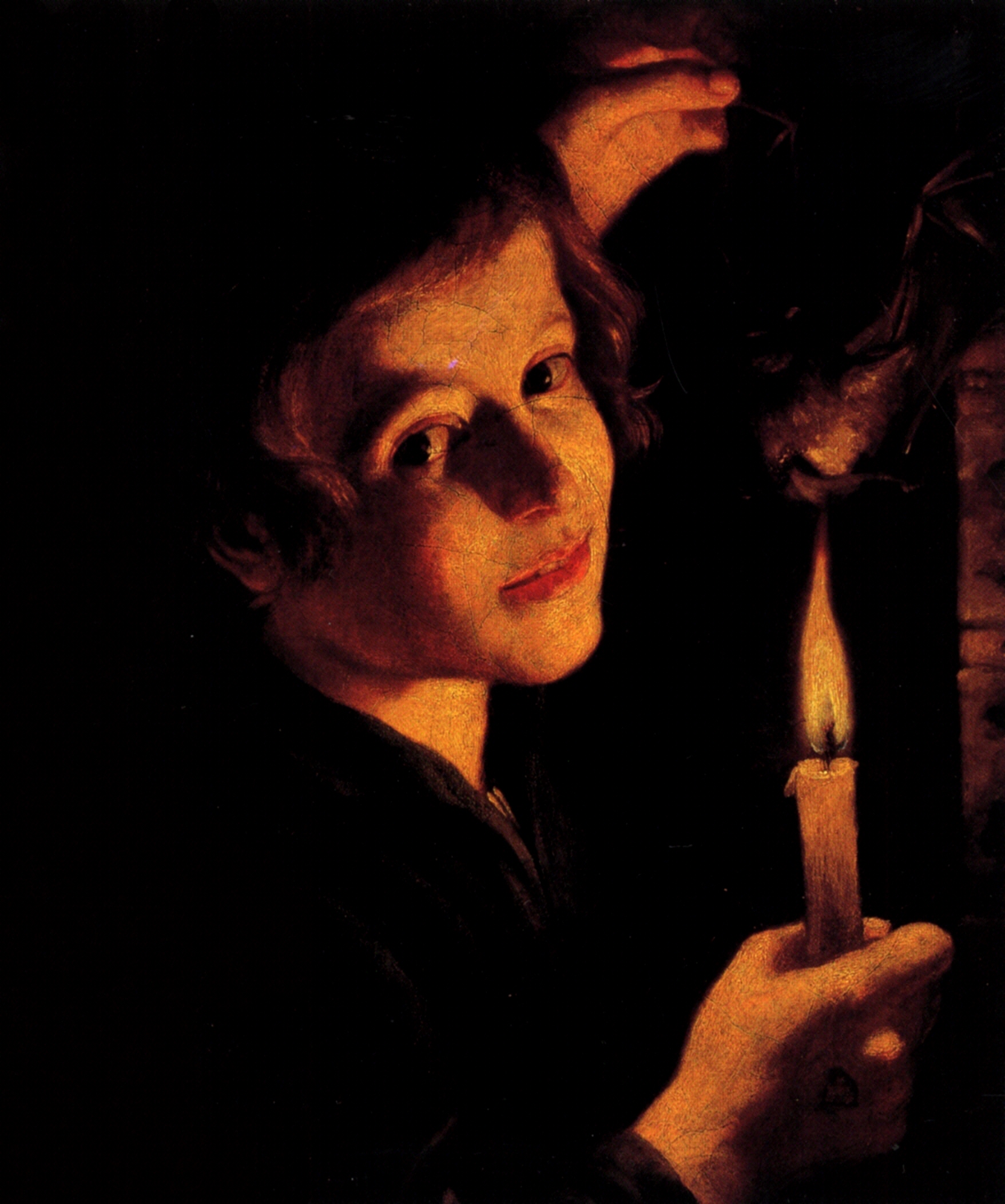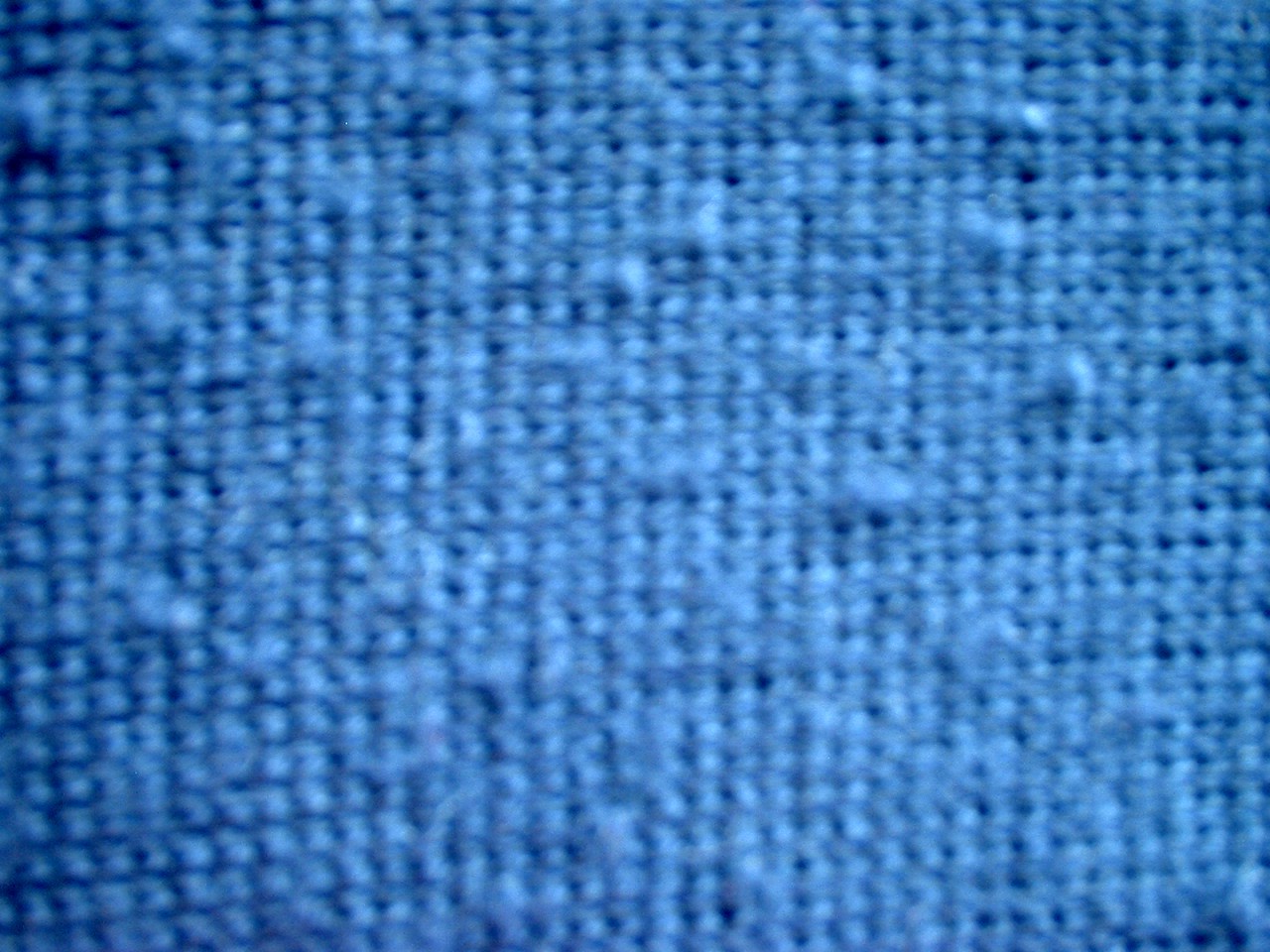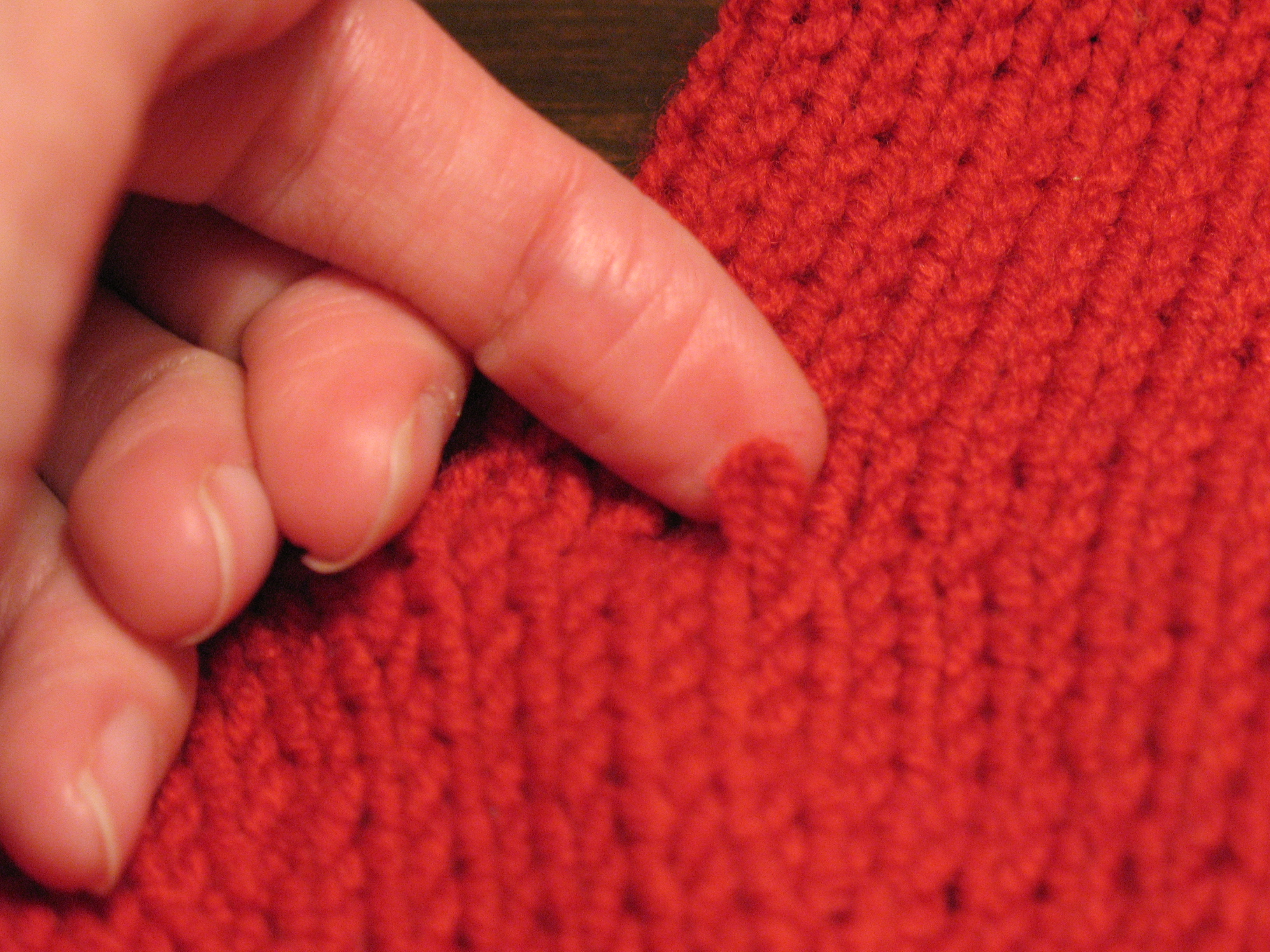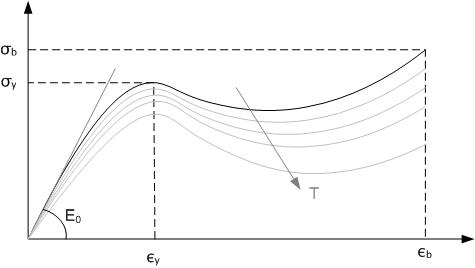|
Singe
A singe is a slight scorching, burn or treatment with flame. This may be due to an accident, such as scorching one's hair when lighting a gas fire, or a deliberate method of treatment or removal of hair or other fibres. Hairdressing A singe is a treatment available at a barber's. A lit taper (candle) or other device is used to lightly burn and shrivel the hair. The practice of singeing was popular approximately a century ago; it was believed that hair had "fluid" in it and singeing would trap the fluid in. Singeing is supposed to have beneficial effects – sealing cut ends, closing up the follicles, preventing the hair from bleeding (a belief that has since been debunked) and encouraging it to grow. Singeing is still sometimes used to bond natural hair to hair extensions. Pre-industrialised cultures have also used singeing as a means to trim scalp or body hair, as a part of normal grooming or during ritual activity. Sir Francis Drake was famously said to have figuratively ... [...More Info...] [...Related Items...] OR: [Wikipedia] [Google] [Baidu] |
Singed The King Of Spain's Beard
Singeing the King of Spain's Beard is the derisive name given to a series of attacks by the English privateer Francis Drake against the Spanish in the summer of 1587, beginning in April with a raid on Cádiz. This was an attack on the Spanish naval forces assembling in the Bay of Cádiz in preparation for the planned expedition against England. Much of the Spanish fleet was destroyed, and substantial supplies were destroyed or captured. There followed a series of raiding parties against several forts along the Portuguese coast. A Spanish treasure ship, returning from the Indies, was also captured. The damage caused by the English delayed Spanish preparations for the Armada by at least a year. Background In the second half of the 16th century a series of economic, political, and religious circumstances created tensions in the relations between England and Spain. Protestant England came into direct confrontation with Catholic Spain; Elizabeth I of England had been excommunicat ... [...More Info...] [...Related Items...] OR: [Wikipedia] [Google] [Baidu] |
Francis Drake
Sir Francis Drake ( 1540 – 28 January 1596) was an English Exploration, explorer and privateer best known for making the Francis Drake's circumnavigation, second circumnavigation of the world in a single expedition between 1577 and 1580 (being the first English expedition to accomplish this). He is also known for participating in the early English slaving voyages of his cousin, John_Hawkins_(naval_commander), John Hawkins, and John_Lovell_(slave_trader), John Lovell. Having started as a simple seaman, in 1588 he was part of the fight against the Spanish Armada as a vice admiral. At an early age, Drake was placed into the household of a relative, William Hawkins (died c. 1554), William Hawkins, a prominent sea captain in Plymouth. In 1572, he set sail on his Francis Drake's expedition of 1572–1573, first independent mission, privateering along the Spanish Main. Drake's circumnavigation began on 15 December 1577. He crossed the Pacific Ocean, until then an area of exclusive ... [...More Info...] [...Related Items...] OR: [Wikipedia] [Google] [Baidu] |
Bigot Boy Singeing Bat
Discrimination is the process of making unfair or prejudicial distinctions between people based on the groups, classes, or other categories to which they belong or are perceived to belong, such as race, gender, age, class, religion, or sexual orientation. Discrimination typically leads to groups being unfairly treated on the basis of perceived statuses based on ethnic, racial, gender or religious categories. It involves depriving members of one group of opportunities or privileges that are available to members of another group. Discriminatory traditions, policies, ideas, practices and laws exist in many countries and institutions in all parts of the world, including some, where such discrimination is generally decried. In some places, countervailing measures such as quotas have been used to redress the balance in favor of those who are believed to be current or past victims of discrimination. These attempts have often been met with controversy, and sometimes been called reve ... [...More Info...] [...Related Items...] OR: [Wikipedia] [Google] [Baidu] |
Cauterization
Cauterization (or cauterisation, or cautery) is a medical practice or technique of burning a part of a body to remove or close off a part of it. It destroys some tissue in an attempt to mitigate bleeding and damage, remove an undesired growth, or minimize other potential medical harm, such as infections when antibiotics are unavailable. The practice was once widespread for treatment of wounds. Its utility before the advent of antibiotics was said to be effective at more than one level: *To prevent exsanguination *To close amputations Cautery was historically believed to prevent infection, but current research shows that cautery actually increases the risk for infection by causing more tissue damage and providing a more hospitable environment for bacterial growth. Actual cautery refers to the metal device, generally heated to a dull red glow, that a physician applies to produce blisters, to stop bleeding of a blood vessel, and for other similar purposes., page 16. The main f ... [...More Info...] [...Related Items...] OR: [Wikipedia] [Google] [Baidu] |
Agricultural Industry
Agriculture encompasses crop and livestock production, aquaculture, and forestry for food and non-food products. Agriculture was a key factor in the rise of sedentary human civilization, whereby farming of domesticated species created food surpluses that enabled people to live in the cities. While humans started gathering grains at least 105,000 years ago, nascent farmers only began planting them around 11,500 years ago. Sheep, goats, pigs, and cattle were domesticated around 10,000 years ago. Plants were independently cultivated in at least 11 regions of the world. In the 20th century, industrial agriculture based on large-scale monocultures came to dominate agricultural output. , small farms produce about one-third of the world's food, but large farms are prevalent. The largest 1% of farms in the world are greater than and operate more than 70% of the world's farmland. Nearly 40% of agricultural land is found on farms larger than . However, five of every six farms in t ... [...More Info...] [...Related Items...] OR: [Wikipedia] [Google] [Baidu] |
Pill (textile)
A pill, colloquially known as a bobble, fuzzball, or lint ball, is a small ball of fibers that forms on a piece of cloth. ''Pill'' is also a verb for the formation of such balls."Pill." ''The Oxford English Dictionary''. 2nd ed. 1989. Pilling is a surface defect of textiles caused by wear, and is generally considered an undesirable trait. It happens when washing and wearing of fabrics causes loose fibers to begin to push out from the surface of the cloth, and, over time, abrasion causes the fibers to develop into small spherical bundles, anchored to the surface of the fabric by protruding fibers that have not broken. The textile industry divides pilling into four stages: fuzz formation, entanglement, growth, and wear-off. Pilling normally happens on the parts of clothing that receive the most abrasion in day-to-day wear, such as the collar, cuffs, and around the thighs and rear on trousers. Causes All fabrics pill to some extent, although fibers such as linen and silk pill ... [...More Info...] [...Related Items...] OR: [Wikipedia] [Google] [Baidu] |
Cotton
Cotton (), first recorded in ancient India, is a soft, fluffy staple fiber that grows in a boll, or protective case, around the seeds of the cotton plants of the genus '' Gossypium'' in the mallow family Malvaceae. The fiber is almost pure cellulose, and can contain minor percentages of waxes, fats, pectins, and water. Under natural conditions, the cotton bolls will increase the dispersal of the seeds. The plant is a shrub native to tropical and subtropical regions around the world, including the Americas, Africa, Egypt and India. The greatest diversity of wild cotton species is found in Mexico, followed by Australia and Africa. Cotton was independently domesticated in the Old and New Worlds. The fiber is most often spun into yarn or thread and used to make a soft, breathable, and durable textile. The use of cotton for fabric is known to date to prehistoric times; fragments of cotton fabric dated to the fifth millennium BC have been found in the Indus Valley civilizat ... [...More Info...] [...Related Items...] OR: [Wikipedia] [Google] [Baidu] |
Hairdressing
A hairdresser is a person whose occupation is to cut or style hair in order to change or maintain a person's image. This is achieved using a combination of hair coloring, haircutting, and hair texturing techniques. A hairdresser may also be referred to as a ' barber' or 'hairstylist'. History Ancient hairdressing Hairdressing as an occupation dates back thousands of years. Both Aristophanes and Homer, Greek writers, mention hairdressing in their writings. Many Africans believed that hair is a method to communicate with the Divine Being. It is the highest part of the body and therefore the closest to the divine. Because of this Hairdressers held a prominent role in African communities. The status of hairdressing encouraged many to develop their skills, and close relationships were built between hairdressers and their clients. Hours would be spent washing, combing, oiling, styling and ornamenting their hair. Men would work specifically on men, and women on other women. Befo ... [...More Info...] [...Related Items...] OR: [Wikipedia] [Google] [Baidu] |
Knitting
Knitting is a method for production of textile Knitted fabric, fabrics by interlacing yarn loops with loops of the same or other yarns. It is used to create many types of garments. Knitting may be done Hand knitting, by hand or Knitting machine, by machine. Knitting creates Stitch (textile arts), stitches: loops of yarn in a row; they can be either on straight flat needles or in ''the round'' on needles with (often times plastic) tubes connected to both ends of the Knitting needle, needles. There are usually many ''active stitches'' on the knitting needle at one time. Knitted fabric consists of a number of consecutive rows of connected loops that intermesh with the next and previous rows. As each row is formed, each newly created loop is pulled through one or more loops from the prior row and placed on the ''gaining needle so'' that the loops from the prior row can be pulled off the other needle without unraveling. Differences in yarn (varying in fibre type, Yarn weight, ''w ... [...More Info...] [...Related Items...] OR: [Wikipedia] [Google] [Baidu] |
Weaving
Weaving is a method of textile production in which two distinct sets of yarns or threads are interlaced at right angles to form a fabric or cloth. Other methods are knitting, crocheting, felting, and braiding or plaiting. The longitudinal threads are called the warp and the lateral threads are the weft, woof, or filling. The method in which these threads are interwoven affects the characteristics of the cloth. Cloth is usually woven on a loom, a device that holds warp threads in place while filling threads are woven through them. A fabric band that meets this definition of cloth (warp threads with a weft thread winding between) can also be made using other methods, including tablet weaving, back strap loom, or other techniques that can be done without looms. The way the warp and filling threads interlace with each other is called the weave. The majority of woven products are created with one of three basic weaves: plain weave, satin weave, or twill weave. Woven cl ... [...More Info...] [...Related Items...] OR: [Wikipedia] [Google] [Baidu] |
Yarn
Yarn is a long continuous length of interlocked fibres, used in sewing, crocheting, knitting, weaving, embroidery, ropemaking, and the production of textiles. '' Thread'' is a type of yarn intended for sewing by hand or machine. Modern manufactured sewing threads may be finished with wax or other lubricants to withstand the stresses involved in sewing. Embroidery threads are yarns specifically designed for needlework. Yarn can be made of a number of natural or synthetic materials, and comes in a variety of colors and thicknesses (referred to as "weights"). Although yarn may be dyed different colours, most yarns are solid coloured with a uniform hue. Etymology The word " yarn" comes from Middle English, from the Old English , akin to Old High German ', "yarn", Dutch ', Ancient Greek (''chordē'', "string"), and Sanskrit , "band". It originally referred to entrails. History The human production of yarn is known to have existed since the Stone Age and earlier p ... [...More Info...] [...Related Items...] OR: [Wikipedia] [Google] [Baidu] |
Thermoplastic
A thermoplastic, or thermosoftening plastic, is any plastic polymer material that becomes pliable or moldable at a certain elevated temperature and solidifies upon cooling. Most thermoplastics have a high molecular weight. The polymer chains associate by intermolecular forces, which weaken rapidly with increased temperature, yielding a viscous liquid. In this state, thermoplastics may be reshaped, and are typically used to produce parts by various polymer processing techniques such as injection molding, compression molding, calendering, and extrusion. Thermoplastics differ from thermosetting polymers (or "thermosets"), which form irreversible chemical bonds during the curing process. Thermosets do not melt when heated, but typically decompose and do not reform upon cooling. Above its glass transition temperature and below its melting point, the physical properties of a thermoplastic change drastically without an associated phase change. Some thermoplastics do not fully ... [...More Info...] [...Related Items...] OR: [Wikipedia] [Google] [Baidu] |









